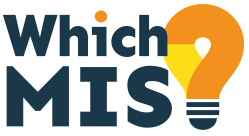Recruitment and retention are significant issues for all schools and Trusts. Our friend, Simon Freeman from IRIS Software Group has recently written an article discussing how MIS technology might assist in addressing these problems.
With new government figures showing a deepening recruitment challenge in education, Simon Freeman, Managing Director for Education at IRIS Software Group, examines the role of MIS tech in shoring up morale and staff retention.
Government figures released this month show little respite for education leaders tackling a deepening recruitment and retention challenge.
The 2023 School Workforce in England data, released on 6 June 2024, reveals that teacher vacancies in state schools have more than doubled in the past three years, with nearly 10% of the teaching workforce leaving the state sector in 2023.
It’s symptomatic of the increasingly difficult nature of teaching. According to the Education Support Teacher Wellbeing Index, nearly four in five (78%) staff have experienced mental health challenges because of work, compounded by everything from pupil behavioural issues, to burgeoning workloads and pay grievances.
Industry voices have called on the government for a comprehensive plan to tackle the recruitment and retention crisis, in reaction to the latest workplace data.
While there is no silver bullet for addressing the series of challenges teachers are facing, there are ways in which administrators can deploy management information systems (MIS) to help alleviate day-to-day burdens and enable teachers to focus on the rewarding job of achieving great outcomes for young people. This is a key part of shoring-up morale in the sector for better retention.
First introduced in the 1980s, the school MIS has come a long way from simply storing pupil addresses and registration marks. Now, a MIS is the digital backbone of a school, providing back-office staff, teachers and school senior leaders with a wide array of tools to store data, run operations, communicate and manage wellbeing.
More recently, we’ve seen a new generation of modern MISs that are hosted in the cloud and even include generative AI functionality. Here are a few ways schools can utilise a modern-day MIS to help address ongoing recruitment and retention challenges.
- Proactively addressing behavioural concerns:
There’s growing evidence that behaviour in schools is becoming more challenging. At the extreme end, a BBC investigation found teachers reporting more instances of fighting, pushing and shoving compared to two years ago. Such conflict can be stressful for teachers to deal with, and it’s often difficult to get to the root cause of a pupil’s behaviour.
There are often many warning signs that pre-empt changes in a pupil’s behaviour, but in the course of a busy school day, finding time to follow up on such signs can be a real challenge for staff. Here’s where a MIS can help.
The first barrier to following up is recording and sharing concerns – with the best will in the world, there isn’t the time in the day to do this in person every time. By providing an easy mechanism to log concerns against a student, in a system that maintains attendance, behaviour, safeguarding and academic performance data in one location, a MIS can help to build up a deep picture about a student that all appropriate staff can see.
Even more powerfully, a MIS can trigger actions based on criteria being met, like a specific number of absences or behaviour points, meaning that staff can spend more time intervening with pupils and providing pastoral care to head off larger issues. This means fewer problems for pupils, a better school environment and a more rewarding job for school staff.
- Recruiting and retaining teachers with flexible work options:
If your MIS is hosted in the cloud, it creates flexible working options. For example, there’s no need for a teacher to have to stay in school to complete their report writing – they can leave to pick up their children and write their reports later that evening. Flexibility like this, as well as the likes of four-day working weeks, spending PPA time at home may be necessary to retain staff who might otherwise leave for industries that offer more flexible working conditions.
Cloud functionality also allows for teacher iPhone and Android apps, so there’s no need to duplicate registers or write up notes when you get back from a school trip – staff can interact with the MIS on the go.
- Reducing friction when communicating with parents and guardians:
According to our own 2023 research, which surveyed 71,129 primary and secondary school parents, 65% feel they are either ‘not well informed’ or ‘only informed at key points’ about their child’s academic progress.
It’s not that school staff don’t want to keep parents informed, it’s an issue of having the time. With newer generative AI technologies, busy administrative staff and teachers can instantly compose email messages to groups of parents, select a template, request a re-write, and even instantly translate the messages into 40 different languages. A validation check can also ensure a person has reviewed the letters before sending.
- Saving time with less duplicate data entry:
Teachers’ workloads are heavy enough without the staggering level of data entry duplication that comes with working across multiple, disjointed systems. A MIS helps education professionals connect the dots – they only need to enter data once and it’s always accurate and up-to-date.
Engaged and happy staff
Taking a tech-first approach has the potential to be game-changing, not only because it allows schools and staff to be more efficient, but because it empowers talent to free-up bandwidth for a happier, more rewarding career.
And while the challenges facing educators are far reaching, the effective deployment of MIS can reduce the increasingly complex pressures they face – helping to keep vital talent in the industry for the long term.

